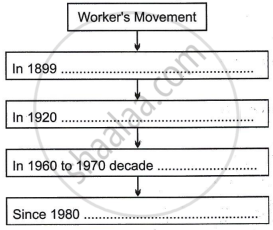Topics
Historiography : Development in the West
History : Applied History
Working of the Constitution
Historiography : Indian Tradition
The Electoral Process
Political Science : Working of the Indian Constitution
Applied History
Political Parties
History of Indian Arts
- What is ‘Art’?
- Indian Traditions of Visual Arts (Drik Kala): Painting
- Prehistoric Paintings
- Mural Paintings and Cave Painting
- Folk Styles of Paintings
- Classical Styles of Painting
- Miniature Paintings in Manuscripts
- Modern Indian Paintings
- Indian Traditions of Visual Arts (Drik Kala): Sculpture Art
- Indus Civilization Sculpture
- Folk Styles of Sculptural Art
- Classical Styles of Sculptural Art
- Indian Iconography
- Indian Traditions of Visual Arts (Drik Kala): Architecture and Sculpture
- Rock-cut Architecture
- Temple Architecture
- Indo-Islamic Architecture
- Indo-Gothic architecture
- Indian Traditions of Performing Arts
- Indian Theatre
- Indian Music
- Indian Dance
- Present Scenario of the Performing Arts
- Art, Applied Art, and Professional Opportunities
Social and Political Movements
- Movement
- Important Movements in India
- Tribal Movement
- Farmers Movement
- Worker's Movements
- Women’s Movement
- Environment Movements
- Consumer Movement
Mass Media and History
Challenges Faced by Indian Democracy
Entertainment and History
Sports and History
Tourism and History
Heritage Management
History - Imperialism
History - 20th Century Age of conflict
History - Emancipation of Asia and Africa
History - World after World War 2
Political Science
Geographical discoveries and colonization
- Concept for Geographical Discoveries and Colonization
Africa
- Imperialism - Africa
Asia: India, China, Japan
- Concept for Asia: India, China, Japan
Dictatorships in Europe, Second World War and world
- Concept on Dictatorships in Europe
- Concept for Second World War and World
First world war
- Concept on First World War
The League of Nations
- Concept for the League of Nations
Russian Revolution
- Concept for Russian Revolution
United Nations Organization
- Concept for United Nations Organization
Africa
- Emancipation of Africa
Asia
- Emancipation of Asia
Globalization
- Globalization After World War II
Scientific and Technological Progress
- Scientific and Technological Progress After World War II
Cold war
- Formation of the Cold War
Social Diversity and Democracy
- Social Diversity
- Coccept for Caste/Race and Democracy
- Concept for Language and Democracy
- Cocnept for Religion and Democracy
- Concept for Gender and Democracy
- Concept for Democracy and Diversity
Challenges to Democracy Remedial Measures to the Challenges
- Concept for Challenges to Democracy Remedial Measures to the Challenges
Internal work
Democracy
- Democracy - Meaning, Types and Characteristics
Political Parties and Types
- Political Parties
- Importance of Political Parties
- Major National and Regional Parties in India/ Types of Political Parties
Notes
Worker's Movement:
- In India, factory production started in the early 1860s. The colonial regime established a broad pattern of trade whereby raw resources were obtained from India and items produced in the United Kingdom were marketed in the colony. As a result, these factories were built in the port cities of Calcutta (Kolkata) and Bombay (Mumbai). In the future, factories were also built in Madras (Chennai). Assam's first tea plantations were created in 1839.
- In the early stages of colonialism, labour was very cheap as the colonial government did not regulate either wages or working conditions. Workers were drawn into the anti-colonial movement by some of the nationalist leaders. Although the war helped our country's industries grow, it also brought the poor a tremendous deal of misery. Food was in low supply, and prices rose dramatically.
- Despite the later development of trade unions, workers did protest. In Bombay's textile industries, there were waves of strikes. There were about 30 strikes that were documented in September and October 1917. Calcutta jute workers went on strike. The employees of Buchingham and Carnatic Mills (Binny's) in Madras went on strike to demand higher pay. Ahmedabad textile workers went on strike in protest of a pay raise of 50%.
- In Madras, India, in April 1918, social worker and Theosophical Society member B.P. Wadia founded the first trade union. Mahatma Gandhi established the Textile Labor Association in the same year (TLA). Bombay saw the creation of the All India Trade Union Congress (AITUC) in 1920. The AITUC was a multi-ideological organisation with a wide base of support. The three main ideological factions were the nationalists, which included figures like Lala Lajpat Rai and Jawaharlal Nehru, the moderates, led by M. Joshi and V.V. Giri, and the communists, led by S.A. Dange and M.N. Roy.
- The colonial authority became more careful when dealing with labour once the AITUC was established. In 1922 the government passed the fourth factories Act which reduced the working day to 10 hours.
- In May 1947, the Indian National Congress made the decision to establish a different union known as the Indian National Trade Union Congress (INTUC) as the communists gained control over the AITUC.
-
The labour movement organised various agitations in the 1960s and 1970s. There was a significant railway workers' strike in 1974. The government restricted all union operations between 1975 and 1977 while there was an emergency. However, the labour movement began to break apart in the 1980s.
- The worker's movement was very much part of the wider struggle for civil liberties.
- Different issues that Indian labourers are dealing with. Some of the issues include unstable working conditions, contract labour, financial instability, a lack of legal protection for employees, unrestricted hours, workplace insecurity, and health risks.
If you would like to contribute notes or other learning material, please submit them using the button below.

